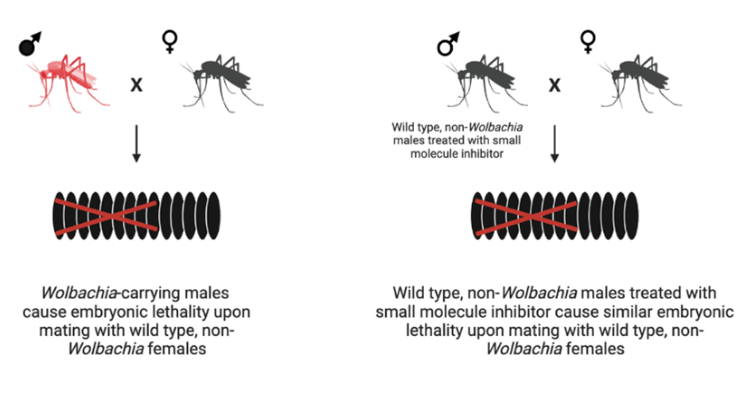Strategies to Modify Arthropod Sperm to Achieve Cytoplasmic Incompatibility without Wolbachia
ID# 2024-5787
Technology Summary
The inventors have established a method to alter host reproductive epigenetic pathway by using a chemical inhibitor molecule, Anacardic Acid, to induce CI without dependence of Wolbachia and other endosymbionts. The invention of achieving CI without the presence of Wolbachia via an epigenetic alteration on potentially any arthropod is applicable for vector and pest control programs. This small molecule chemical approach can be more effective than current methods that are sensitive to reduced effectiveness and pose many challenges. This patented small molecule chemical approach replicates the incompatible insect technique. In this new method, the HAT inhibitor such as anacardic acid among others, causes a reduction in hosts’ ability to produce viable offspring.
Application & Market Utility
Release of Wolbachia infected hosts into nature as part of current programs look to suppress target population size or replace the disease spreading host population. The challenge is that Wolbachia density can decrease and reduce its efficacy over time. While Wolbachia is common in nearly half of arthropods, there are vector species that do not harbor Wolbachia. An alternative is needed as an optimization of current vector control methods. The main application would be in controlled releases to crash pest arthropod populations, or as a form of population replacement.
Next Steps
This new patented technology is undergoing lab studies, and the inventors are seeking licensing opportunities.

